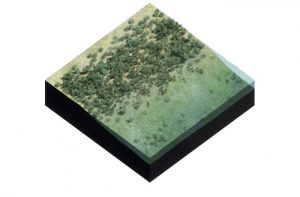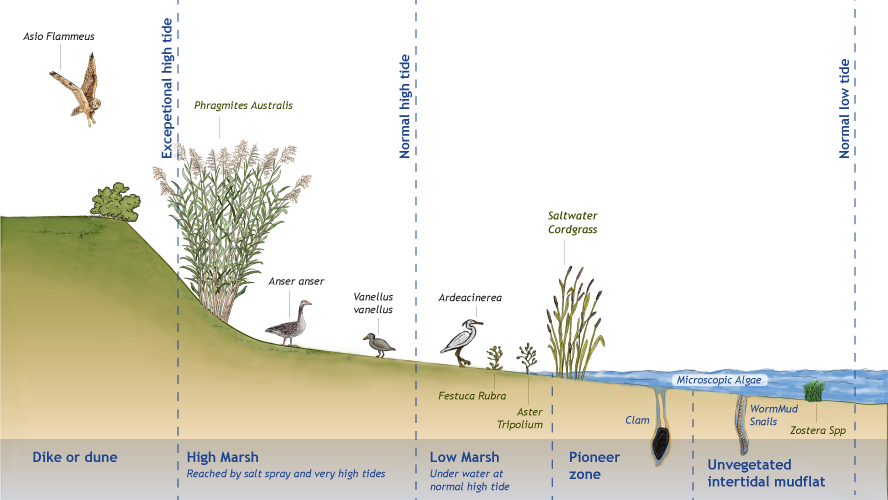Hydrosphere – salt marshes
Tidal environment: salt marshes are vegetated habitats bordering saline or brackish water bodies under tidal influence. They are located in the upper parts of the intertidal zone. Regular flooding is an essential aspect for marshes. Within a salt marsh, various zones can be distinguished based on flooding frequency. The pioneer zone is flooded twice daily, the low marsh zone is inundated during mean spring tides (100-400 floods each year), and the middle/high marsh zone is flooded less than 100 times per year (Bakker et al. 2004).
Sheltered hydrodynamic conditions: marsh development generally starts on a bare intertidal flat (mud flat) that is protected from high energy waves. Sheltering from strong currents (cross-shore and longshore) and tidal waves is essential to prevent erosion and allow stabilization of the marsh platform by the vegetation. In contrast, the hydrodynamic energy needs to be sufficient to keep sediment suspended and to transport sediment to the upper part of the marsh. Indicative figures: a current velocity in the order of 1.2 m s-1 may be considered as an upper threshold for natural marsh development (Van Loon-Steensma et al. 2012). But this will be very location specific, depending on direction of the currents, grain size of the initial substrate and age of the system. Older marshes will be able to withstand higher hydrodynamic conditions than younger pioneer marsh.
Suspended sediment concentration: sufficient sediment in the system is essential for salt marshes to develop towards a long-term sustainable marsh. It determines how much sediment can accumulate on the marsh surface (Temmerman et al. 2003). Based on a theoretical model a mean suspended sediment concentration (SSC) of ~20 mg/L is given as the minimum concentration necessary for marshes to keep up with conservative projections of sea-level rise (Kirwan et al. 2010).
Salinity: saline conditions are a key feature of many marshes. Salinity ranges from high saline conditions near a seawater body, towards more brackish tidal marshes located within estuaries near river mouths. Salt marshes have an average salinity between 18.0 and 35.0 ppt; a salinity below 0.5 ppt is considered as tidal freshwater marsh (Odum 1988). Within a marsh, there is a gradient of salinity inversely related with increasing marsh elevation. This is represented by different plant zonations. Marsh species are able to tolerate saline conditions which make them unique for this specific habitat type.


